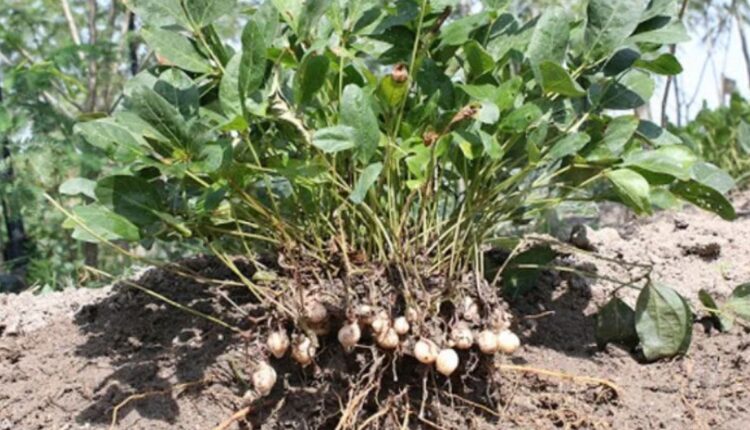AI-Guided Seed Selection: A Game-Changer for Indian Farmers
AI-guided seed selection is transforming Indian agriculture by helping farmers choose optimal seeds based on local conditions, leading to increased yields and lower costs.
AI-Guided Seed Selection: Agriculture is the backbone of India’s economy, employing nearly 60% of the population. However, Indian farmers, especially those with small landholdings, face many challenges—erratic weather, declining soil fertility, water shortages, and access to quality seeds. The latest technological advancements in agriculture, especially AI-guided seed selection, offer a promising solution to many of these problems, providing a ray of hope to India’s farmers, especially the poor ones.
What is AI-Guided Seed Selection?
AI-guided seed selection is the process of using artificial intelligence (AI) to analyze large datasets related to soil health, climate patterns, water availability, and crop genetics. AI algorithms can recommend the best seeds for specific regions, based on the local environmental conditions. It helps farmers choose the right seeds that will yield more produce, require fewer resources, and resist pests and diseases.
Why is AI-Guided Seed Selection Important for India?
In India, 85% of farmers are small and marginal, owning less than 2 hectares of land. These farmers often struggle with limited access to quality seeds, which significantly affects their productivity. Traditional methods of selecting seeds are based on local knowledge and practices, but these methods may not be sufficient in the face of changing climatic conditions and increasing pest problems.
With AI-guided seed selection, even a small farmer in a remote village can receive precise recommendations for the best-performing seeds, specific to their land, season, and needs. This means better harvests with lower costs, directly improving the income and livelihood of poor farmers.
How AI-Guided Seed Selection Works
AI-driven platforms like Microsoft’s AI Sowing App and Corteva’s Granular Insights already demonstrate the potential of AI in Indian farming. Here’s how the process typically works:
1. Data Collection: AI uses satellite data, weather patterns, and soil health information from sensors to gather extensive data on the farm’s environment.
2. Analysis: AI algorithms analyze this data to predict the most suitable crops and varieties of seeds for the farmer’s specific location.
3. Recommendations: Farmers receive personalized recommendations via mobile apps or SMS on which seeds to plant, when to plant them, and how to manage their crops during the growing season.
Real-Life Example: The AI Sowing App
In 2017, Microsoft partnered with the International Crops Research Institute for the Semi-Arid Tropics (ICRISAT) to launch the AI Sowing App. This app sends SMS alerts to small farmers in Telangana about the best time to plant their crops, based on AI analysis of local climate data. During a pilot phase, 3,000 farmers were able to achieve 30% higher yields by following AI-generated advice on when to sow and which seeds to use.
Benefits for Poor Farmers
1. Increased Yield: AI can boost yields by recommending seeds that are more suited to the changing climate. According to reports, AI-based seed selection can increase yields by 10-30%, which is crucial for small and marginal farmers who depend on every crop cycle.
2. Cost Savings: By choosing seeds that require fewer fertilizers, pesticides, and water, farmers can significantly cut their input costs. In drought-prone areas, AI can recommend drought-resistant seeds, helping farmers save on irrigation costs.
3. Access to Information: Many poor farmers in India are disconnected from modern agricultural research and high-quality seeds. AI can bridge this gap by making cutting-edge agricultural advice accessible through simple mobile apps, even in rural areas where smartphone penetration is over 35% and growing.
4. Climate Adaptation: AI-driven seed selection can help farmers cope with climate change by suggesting seeds that can withstand extreme weather patterns, like floods or droughts. For example, AI can recommend flood-resistant rice varieties for regions prone to monsoons, such as parts of Bihar and Assam.
Specific Examples:
1. AI in Andhra Pradesh: The Rythu Bharosa Kendras (RBKs) set up by the Andhra Pradesh government have started incorporating AI-driven tools to provide farmers with personalized seed selection recommendations. These centers collect soil health data and use AI to suggest the best seeds for specific areas. This is part of the government’s effort to use precision agriculture to increase productivity and reduce risks for small farmers.
2. IIT Madras’s Initiative: Researchers at IIT Madras have developed AI-powered models that help predict crop yields and recommend the best seeds to use based on specific climate conditions and soil health. This initiative was tested in Tamil Nadu, where farmers saw better yields with fewer resources after using AI-guided recommendations.
3. AI in Wheat and Rice Farming:
India is the second-largest producer of wheat and rice in the world, and AI is helping farmers in states like Punjab and Haryana optimize seed selection. For instance, AI can analyze weather patterns, including early monsoon predictions, to recommend rice varieties that are resistant to both floods and droughts. In regions facing declining water tables, AI is suggesting wheat varieties that require less water.
4. PM-Kisan Mobile App: Under the Pradhan Mantri Kisan Samman Nidhi (PM-Kisan) scheme, the Indian government has developed a mobile app that incorporates AI and machine learning to provide smallholder farmers with tailored advice, including seed selection. This app provides free-of-cost information, making it accessible even to those in remote areas with limited financial resources.
5. The Example of Karnataka Farmers: In Karnataka, an AI initiative by the government and private organizations has been focused on helping farmers choose seeds that can withstand unpredictable monsoon rains. As a state heavily reliant on rain-fed agriculture, these AI tools have been vital in suggesting seed varieties that are drought-resistant yet yield higher output in areas prone to dry spells, benefiting over 50,000 small farmers.
Indian Crop Varieties and AI
AI platforms are increasingly focusing on traditional Indian crops like millets, which are highly suitable for dry areas and regions with low water availability. With the 2023 declaration of the International Year of Millets, AI-driven seed selection has gained attention in helping farmers choose resilient millet varieties for regions like Rajasthan and Maharashtra. These areas have seen increased yields by over 20%, thanks to AI recommendations.
Government Support for AI in Agriculture
India’s National Strategy on Artificial Intelligence, introduced by NITI Aayog, has a special focus on agriculture, with a goal to deploy AI solutions for crop management and seed selection. The government’s support for initiatives like AgriStack, which will digitize all aspects of farming, will play a crucial role in making AI-guided seed selection accessible to even the poorest farmers in India.
The Indian government has recognized the potential of AI in agriculture. In its 2023-24 Union Budget, the government allocated ₹1,118 crore to agricultural research, including AI applications for precision farming. Additionally, private companies like Tata Consultancy Services (TCS) and IBM are working on AI-based platforms for Indian agriculture.
These examples provide further relevance and highlight how AI is being integrated into India’s agricultural landscape to benefit poor and smallholder farmers across diverse regions and crops.
Challenges Ahead
While AI-guided seed selection offers immense potential, its success depends on overcoming several challenges:
1. Digital Literacy: Many poor farmers may not be familiar with using smartphones or digital platforms. Thus, there is a need for awareness programs and training on how to use AI-based tools effectively.
2. Data Availability: AI requires large datasets to function effectively. In remote parts of India, where data collection is still in its infancy, the effectiveness of AI might be limited until more reliable datasets are developed.
Cost of Technology
While AI-driven recommendations can be cost-saving in the long term, the initial investment in AI infrastructure (sensors, apps, etc.) may be beyond the reach of many poor farmers without government or private sector support.
AI-guided seed selection is a revolutionary technology that has the potential to transform Indian agriculture, particularly for small and marginal farmers. By enabling farmers to select the right seeds, AI can increase yields, cut costs, and improve resilience to climate change. However, for this technology to truly benefit poor farmers, efforts must be made to improve digital literacy, data availability, and access to affordable technology.
With proper implementation, AI-guided seed selection could be a powerful tool to empower India’s farmers, helping them achieve food security and better livelihoods in the face of a rapidly changing world.
Contact us- If farmers want to share any valuable information or experiences related to farming, they can connect with us via phone or whatsApp at 9599273766 or you can write to us at [email protected]. Through Kisan of India, we will convey your message to the people, because we believe that if the farmers are advanced then the country is happy.
You can connect with Kisan of India on Facebook, Twitter, and WhatsApp and Subscribe to our YouTube channel.



